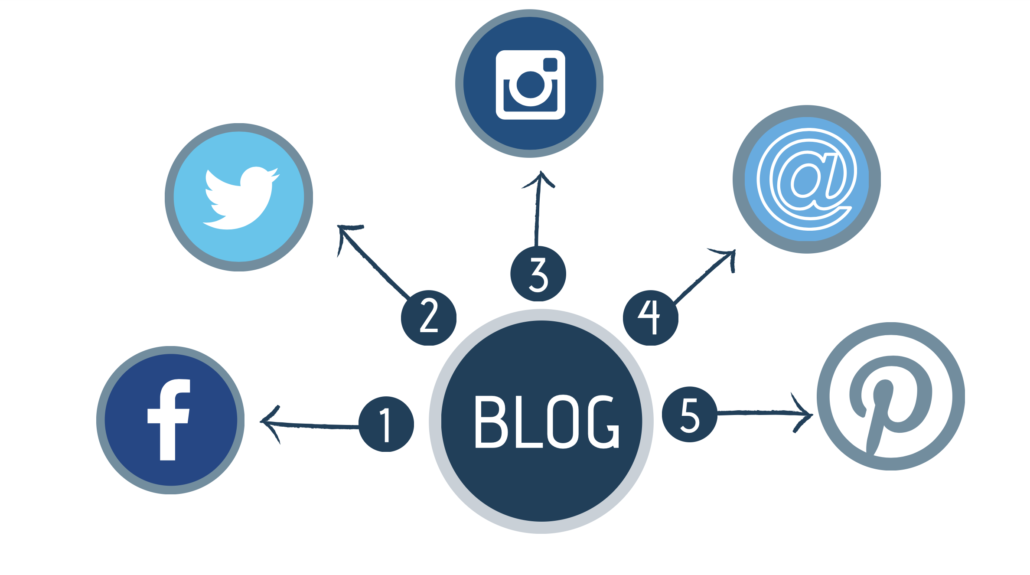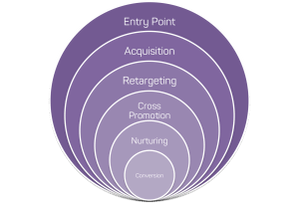Tag Archive for: content marketing
How to Generate More Traffic to Your Tourism Blog

Your tourism blog is one of the best ways to tell your story to consumers. Not only should you consistently update your blog to inform users about your destination and maintain sustainable SEO, but you should also be strategic about where you are distributing your blog once it’s live on your website.
We recommend living by the “5 Rule” which means that every piece of content on your website or blog has the potential to be shared at least five different ways after it is published on your site. Read on to learn how to generate more traffic to your tourism blog in no time!

First and foremost, every blog deserves a Facebook post! Not only this, but every blog deserves to be activated with Paid Promotion on Facebook as well. When you’re putting together your blog post for Facebook, carefully consider how your blog content is related to specific niche markets that you can target. For example, if your blog is about wine tasting in the area, consider targeting your post to reach wine enthusiasts in feeder markets. When crafting your post, make sure to think about the small details, too, especially your link header text* and the image accompanying the link. Finally, include language that will encourage users to act!
*You can no longer edit the link header text when you are uploading your link to your post, you will likely have to think of this when you are crafting your post on the website side.
A great next step in your blog distribution is to support it by tweeting about it! We recommend thinking of three different ways to compose tweets on the subject. Since the Twitter algorithm seems to constantly be changing, it’s important that you trickle the distribution of your blog on Twitter throughout the week with different days and times to achieve best performance on the platform.
Whether you’re sharing your cool photography or fun times with friends, Burnsville has some awesome Instagram Hotspots for you! 📷
Check out our latest blog for the best photo ops and share your pics with us using #MyBurnsville
Click here: https://t.co/M0pnfrDXGF pic.twitter.com/8Wlj2K9pJ2
— Experience Burnsville (@burnsvillemncvb) July 12, 2019
Next up you’ll want to generate awareness of your blog on Instagram both in the feed and on your stories. Start by replacing the link in your bio with your new shortened link. This is especially important because links are not clickable in the captions of an Instagram photo! When you’re crafting your post, be sure that you’re posting it in a way that will resonate on Instagram. This means, use your best photo to make sure the post stops scrolling thumbs! You can also post about the blog on your story and give readers a snippet of what the blog contains to help encourage them to swipe up or click the link in your bio.
Read this blog for tips on putting together a noteworthy Instagram story.
Pinterest is a highly effective tool for supporting blog content for tourism as it can combine your images and links in a very appealing way. We recommend pinning every photo from your blog to Pinterest to ensure full coverage! Make sure you’re including the direct URL to your website to ensure highest possible performance and pull in traffic to your website.
E-Newsletter
Lastly, it’s vital to include your content in your tourism e-newsletter, as it’s a key tool in driving traffic to your website as well as keeping users informed on a regular basis. If you’re on a weekly blog distribution schedule (as opposed to monthly), you don’t have to include every piece of content that you write in your newsletter, as this could potentially be overwhelming for readers. But, if you’re having trouble deciding which blogs to include in your newsletter, consider taking a look at your most popular posts on your Google Analytics and go from there! For more tips on putting together a tourism e-newsletter, check out this blog.
It is critical to distribute your tourism blog across all digital platforms of your organization. This strategy will allow you to reach a wider variety of you audience as you aren’t focusing on just one platform. By following these distribution tips, your tourism blog will gain more traffic in no time! If you are looking for new ways to stay updated on your destination marketing, be sure to subscribe to our e-newsletter or follow us across social media at the links below!
Content Creation Without Reinventing the Wheel

Content creation doesn’t have to be hard
By Grant Kenney, TwoSix Digital Senior Digital Strategist
One thing I’ve heard from clients no matter what industry they’re in: “it’s so hard to find content to write about every day!” Having been on that side of the conversation before as a social media manager I can sympathize, but I have found ways around this persistent issue. Here are a few tips on what you can do to improve your content creation without reinventing the wheel every day.
Could I be overthinking my content creation?
Yes, absolutely. It can be a daunting process to think about all of the channels you need to write content for, but it doesn’t need to be. If you’re armed with something your audience doesn’t know you’re already off to a great start, and guess what? You know more than you think and there’s great content all around you.

As Calvin told Hobbes, “there’s treasure EVERYWHERE!” Don’t go looking too hard for it.
Raid your website
Remember back to your hiring at the company or position you’re in now when you were learning the history and details of your company, DMO or brand by studying the website? ALL of those little things you learned early on may seem mundane now but were kind of interesting when you learned them. These are solid pieces of content now.
Try pulling some interesting talking points from your website and then craft them into informative and interesting social posts that send people back to your website for extra traffic. The great thing about this content is that it’s always there, always useful and always informative. Read more
Digital Campaign Process for DMOs Beyond the Sign Up (VIDEO)
By Brian V. Matson, TwoSix Digital Senior Director of Strategy and Education
I recently returned from the Texas Association of CVB conference in Beaumont, Texas where I presented a keynote on digital campaigns. The session was well-received. One of the talking points that seemed to have stuck with attendees was my analogy of digital campaign development compared to the layers of an onion. My point was that when conducting a digital campaign much of the effort should come after the public campaign comes to an end.
Peel back the layers in your digital campaign

There are many stages in conducting successful online digital campaigns.
The layers of the “campaign onion” are:
Entry Point: The entry point is simply how users are getting to your offer. It could be through paid ads, organic posts or through blogs, etc. Even if a user doesn’t interact with the offer you still have a major opportunity to cookie the user for later communications and content offerings.
Acquisition: The acquisition stage is when a user enters their email, submits information, likes a page or opts in for future communications. These users will be added to a database that you can use to target future messaging to whether through promoted content, e-newsletters, etc.
Retargeting: This stage is after the public campaign has ended and it’s time to put the data to work. By using retargeting tools you can reach a wide range of users who interacted with your initial offer. It’s key that the retargeted messaging match the theme of the campaigns niche for maximum resonance.
Cross-Promotion: During retargeting you can cross-promote your other social media accounts. Building additional touch points with consumers can help you reach them in a more regular manner. If a user follows you on Facebook you should try to entice them to connect on Instagram, Pinterest, etc. by sharing content from those channels in retargeted messages.
Nurturing: This is all about engagement and interaction. This stage is key to showing users relevant content and putting your human side forward for increased authenticity and consideration.
Conversion: This stage may take a bit of time but eventually, if you provide quality content pieces that resonate with user interests, you will enjoy the benefits of a well-educated visitor who is more prone to share their experiences and increase word-of-mouth awareness for your destination.
While many DMOs do a great job of presenting offers to their audiences there are a lot of missed opportunities to get more out of the results of a campaign’s core mechanics. Once a user has clicked on an ad or social media post they’ve indicated interest. It’s our job as marketers to develop and deliver content well after the campaign ends to continue the educational and inspirational process whether they signed up or not. If your digital campaign is focused on a particular niche (as it should be) you now have a prequalified audience to develop content for. That’s huge.
Before you launch your next digital campaign
Check to make sure that you’ve done the following:
- Installed a Facebook website pixel on the campaign’s landing page to retarget users with relevant content relating to the campaign’s theme in the future.
- Ensured (and tested) that the campaign is mobile friendly and features an easy to use sign up process from mobile devices. Don’t forget the opt in!
- Developed a plan for using existing databases to help drive your online advertising for the campaign. These high value targets can really enhance your final results. Facebook’s Custom Audiences and Lookalike Audiences should be created in the ads manager prior to the launch of the campaign.
- You’ve created a content calendar including a handful of posts (or evergreen content) that can be used to re-market to users after the campaign ends. Stretch it out. Think long term communication and provide valuable bite-sized pieces of content to keep consumers aware of your destination in relation to their expressed niche.
Want to learn more? Check out the entire keynote below which includes several case studies, additional tips and even more info on making your next digital campaign one that produces results well into the future and help to better convert your next wave of visitors.
